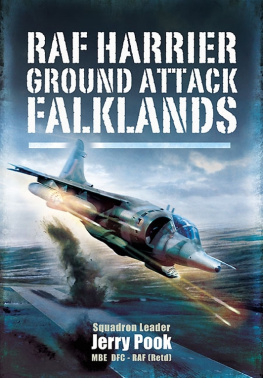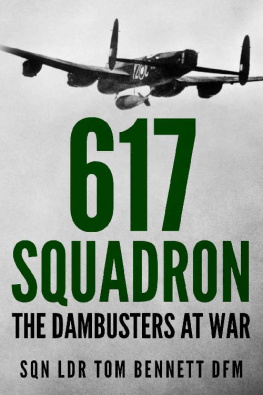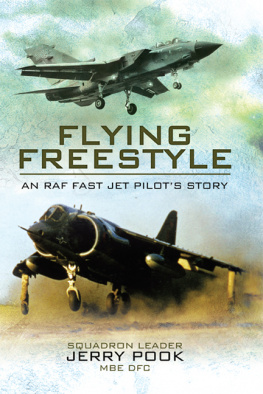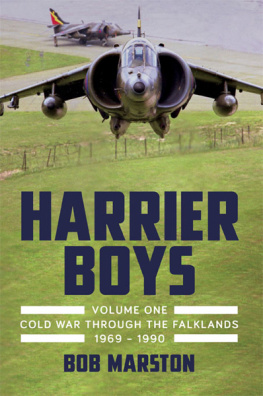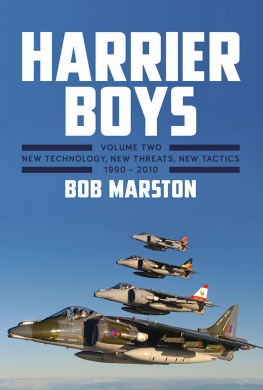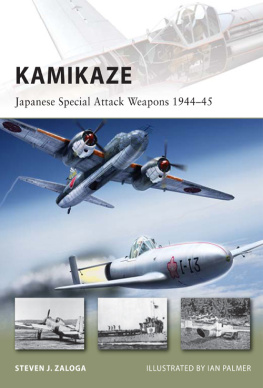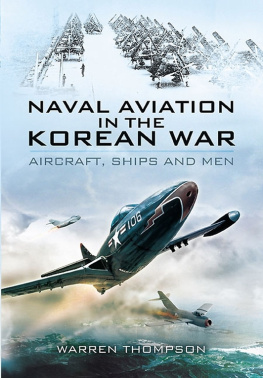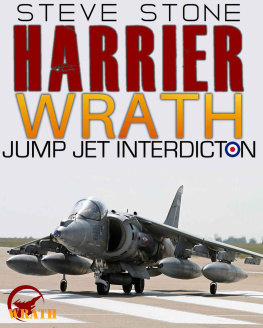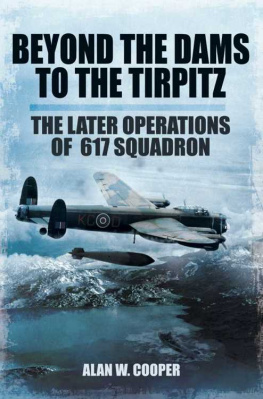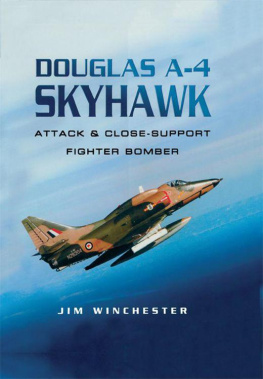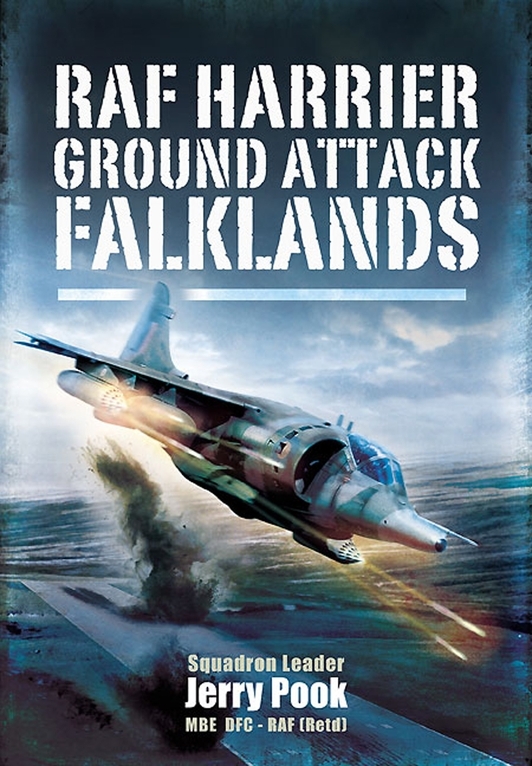The Technique
From the pilots point of view, Low Flying over friendly territory was not particularly difficult or dangerous just great fun! All you had to do was get down as close to Mother Earth as possible, and avoid flying into any user-hostile obstacles. The odd thin telephone wire or leafy tree top wouldnt do you much harm, but an encounter with overhead power lines or solid ground was usually fairly terminal. Naturally, Low Flying in unpopulated and uncivilised terrain (such as the Falklands) meant not having to worry about any man-made obstacles, which were usually the most difficult to see. Hence, we could really go for it where necessary and get right down as low as we could.
A lot of bullshit has been spoken and written about how low it is possible to fly an aircraft such as the Harrier, and this is a favourite bar topic for the more macho pilots. The facts are that even the most competent (or foolhardy) pilot cannot get the aircraft much below about 10 feet above ground and that over pretty flat and well-defined terrain. At these heights and at speeds of 420 kt plus, it feels as if the aircraft is skimming the grass. Old films of the Red Arrows show that genuine aces such as Ray Hanna could get the Gnat down consistently to just a few feet over an airfield, but this was exceptional and not so easy in a larger and faster aircraft over normal terrain. (The tiny GNAT T1 was the RAFs Advanced Trainer of the 1960s and 1970s, and it was an aeroplane custom-built for hooliganism. Unlike its replacement, the Hawk, the Gnat was a genuine Fast Jet, capable of 600 kt at Low Level, combining high performance and, for its day, a very high-tech cockpit.)
When flying at such low heights, all of the ground up to some 200 300 metres in front of the aircraft appears as a blur, and the pilot can only take avoiding action on obstacles he can see and identify beyond this distance. As speed is increased, so proportionally does this blurred area, and there is an overwhelming instinct to fly higher in order to be able to identify small obstacles in time to avoid them. The pilots eyes are locked to the straight ahead position while this is going on; only the most experienced and practised will have any capacity left to look at a map or briefly look to one side to check for Bandits (hostile aircraft). The problem is much worse in a turn, when as much as 80 degrees of bank angle must be used to get around corners. This puts the wingtip some 15 feet closer to the ground at a stroke, and must be compensated for by an increase in height as the bank comes on. Consistent failure to do this leads to digging-in of the wingtip, followed by instant oblivion. Less experienced pilots tend to over-compensate for bank angle and will fly higher and higher above ground the more they are forced to manoeuvre, thus making themselves easy targets for the opposition.
Low Level Navigation
The Falklands war was the last to be fought by the RAF in which Ground Attack aircraft relied on the traditional map-and-stopwatch style of navigation, a method almost as old as flight itself. In the absence of reliable modern navigation aids such as the inertially driven moving map and GPS, this was the only available technique, and demanded considerable pilot ability to achieve success. The technique is simple in principle and involves plotting the desired track on a 1:500,000 or 1:250,000 scale map, measuring required headings and putting in timing marks to show distance covered every minute. After some map study before take-off, all the pilot has to do is to fly the planned headings, allowing for drift, and start his stopwatch at the beginning of each leg of the route. In flight, he will follow the features shown on the map while using the time elapsed on the stopwatch to give him an indication as to how far he has progressed along track. If drift can be accurately measured in flight (impossible in the Harrier) and if ground speed and heading are both flown with total accuracy (also impossible with the unreliable and inaccurate instrumentation available) then pilots would never get lost! As an additional problem, Ground Attack pilots are rarely afforded the luxury of being allowed to follow the planned track throughout the sortie especially in wartime. Deviations to avoid bad weather or hostile aircraft are an obvious problem. As a result, a large part of peacetime RAF Low Level training used to be devoted to free navigation off track, where the pilot reads from ground to map and identifies the features as he passes them in order to keep tabs on his position. Even at normal peacetime Low Flying heights (250 feet) this can be a bit of a lottery as many areas are relatively featureless or, alternatively, crammed with too many similar features for consistent map reading. In such circumstances the pilot can only Seamans Eye the approximate vector and hope to pick up an accurate position check later on when he finds a more identifiable feature. Bear in mind that every minute spent on the wrong track will take the pilot 7 miles away from where he thought he was.
As a result of all this uncertainty it will not surprise the reader to learn that all Single-Seat Ground Attack and Recce pilots held Honorary Membership of the Fukawi tribe.
Operational Low Flying
At the operational heights mentioned above, navigation becomes much more difficult. For a start, time available to look at the map is strictly limited. Additionally, at such heights the horizon is much closer, thus allowing far less time to see and identify features. The reader must bear in mind that throughout all this the pilot will also have to monitor his position within a formation of aircraft and keep a lookout for enemy aircraft and likely targets on the ground, to say nothing of monitoring aircraft systems, fuel state and the warnings on his Radar Warning system.
Attack Navigation
If Low Level en-route navigation was so difficult, how then was the pilot able to find a small, camouflaged target? The answer lay in the 1:50,000 (tourist) map on which the target was plotted. Basically, the pilot would select an Initial Point (IP), which was a large, easily identifiable feature on the 1:500,000 scale map, and which lay within a couple of minutes flying time of the target. This feature would then be plotted on the 1:50,000 map and a line drawn direct to the target position. An accurate heading would be measured, and he would plot timing marks every ten seconds of distance on the Initial Point map. On reaching the Initial Point the pilot drops the half mil map and switches navigation to the 1:50,000 map, setting off from the Initial Point exactly on heading and hacking (starting) his stopwatch when exactly overhead the point. He is now map reading on the equivalent of an OS Landranger map at a speed of 7 or 8 miles per minute. This takes years of training to get consistently right. During planning, after selecting a good Initial Point the pilot makes a careful map study of the route in order to pick out a limited number of easily identifiable check points such as buildings or woods that are on or close to track. Close to the target it is essential to have a final check feature to guarantee line up for the last few miles of the run-in.

